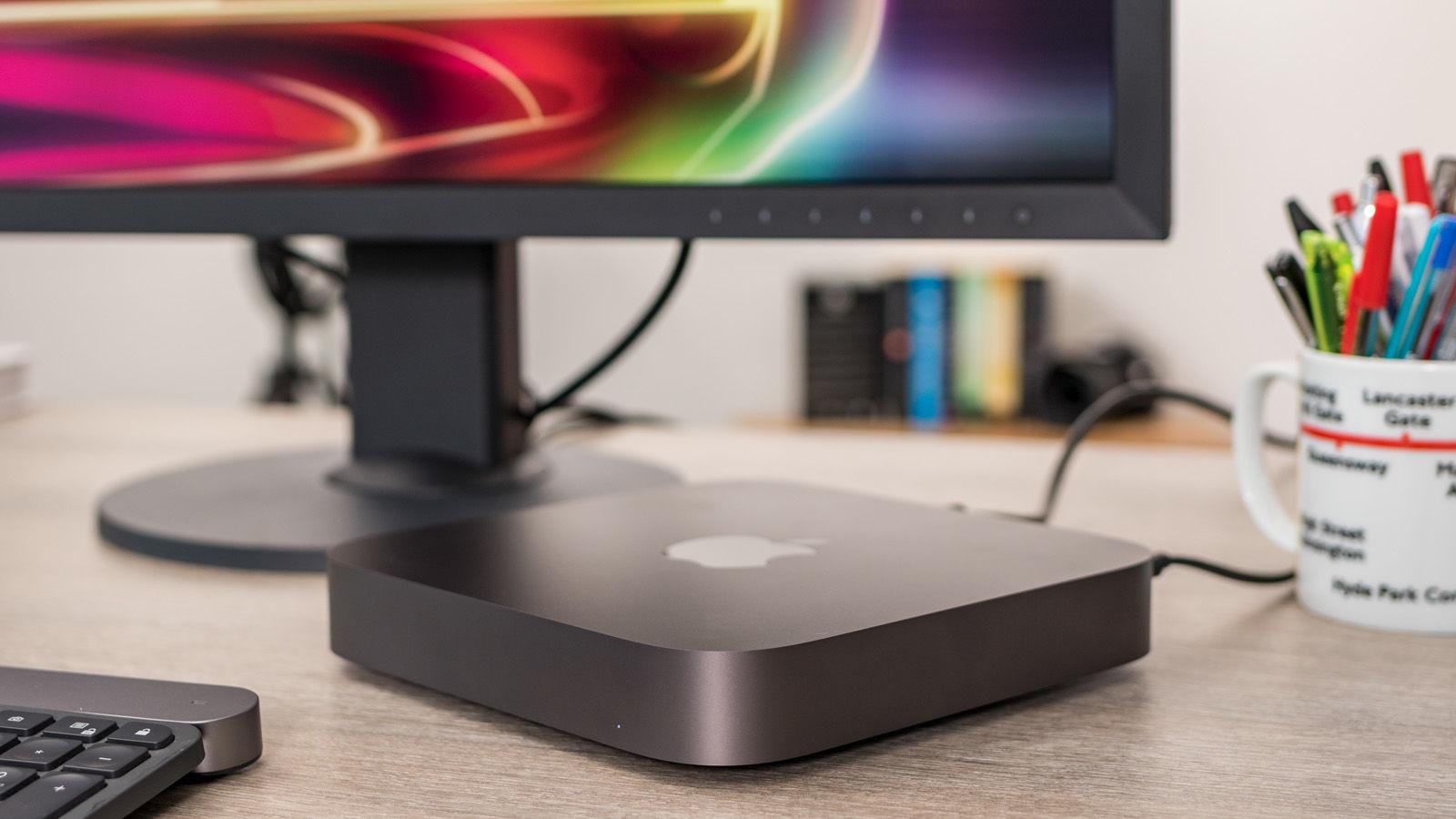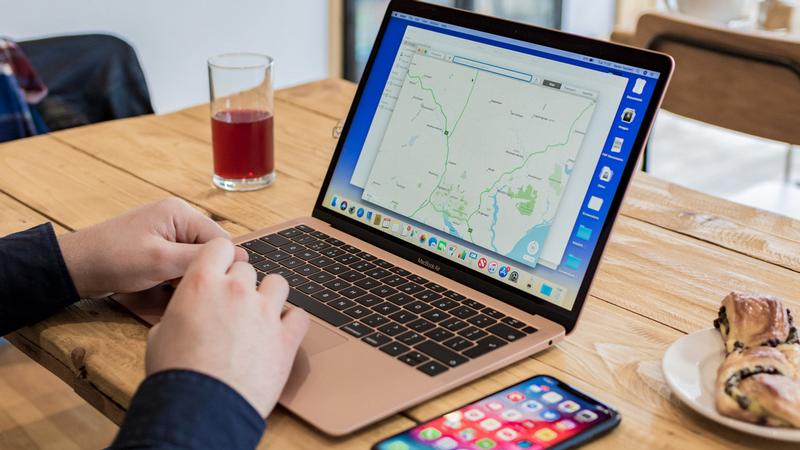Our Verdict
Whether the Mac mini or MacBook Air is the best value Mac depends primarily on what you need it for. The Mac mini was always our winner in terms of how much bang you get for your buck, but now that the MacBook Air has an M2 chip it’s certainly looking like a better deal, if you don’t mind spending more.
Best Prices Today: Apple Mac mini (2020) M1
The Mac mini and MacBook Air are priced lower than any other Mac in Apple’s line-up, and yet they are powerful Macs that will suit the majority of Mac users.
If you are looking for a bargain – the cheapest Mac money can buy – you may be trying to decide between these two Macs and wondering which one offers the best value for money. If that sounds like you you’ve come to the right place. In this article we’ll be looking at whether an Apple fan on a budget should buy the MacBook Air or the Mac mini? Read on for our detailed analysis and buying advice.
In November 2020 Apple updated the MacBook Air and the Mac mini with the M1 Chips – beginning Apple’s transition of its whole range from Intel to its own processors. Then in June 2022 Apple updated the MacBook Air again, introducing two M2 models while retaining the entry-level M1 MacBook Air. The Mac mini didn’t gain an M2 chip at the same time. As a result we now have a MacBook Air with M2 chip, joining two Mac mini and a MacBook Air with M1 chips.
We also have a full review of the M1 MacBook Air and a Mac mini M1 review.
MacBook Air and Mac mini compared
At the entry level the specs of the Mac mini and MacBook Air are similar. Both offer an M1 chip, but the Mac mini has more graphics cores than the M1 MacBook Air. The MacBook Air, on the other hand, now has an M2 option.
Here’s how the specs compare:
| MacBook Air M2 | MacBook Air M1 | Mac mini M1 | |
|---|---|---|---|
| Starting Price | From $1,199/£1,249 | From $999/£999 | From $699/£699 |
| Display | 13.6in Liquid Retina with True Tone | 13.3in Retina display with True Tone | None (supports up to two 4K separate displays, or three if you buy the remaining Intel model) |
| Resolution | 2560 x 1664 | 2560 x 1600 | n/a |
| Dimensions | 30.41 x 21.5 x 1.13cm 11.97 x 8.46 x 0.44in | 30.41 x 21.24 x 0.41-1.56cm 11.97 x 8.36 x 0.41-1.61in | 19.7 x 19.7 x 3.6cm 7.7 x 7.7 x 1.4in |
| Weight | 1.24kg 2.7lb | 1.29kg 2.8lb | 1.2kg 2.6lb |
| Colors | Silver, Space Grey, Starlight (Gold), Midnight (Blue/Black) | Silver, Space Grey, Gold | M1 model is Silver, Intel model is Space Grey |
| Processor | M2 Chip with 8‑Core CPU and 8‑Core GPU or M2 Chip with 8‑Core CPU and 10‑Core GPU | M1 Chip with 8‑Core CPU and 7‑Core GPU | M1 Chip with 8‑Core CPU and 8‑Core GPU or Intel 3.0GHz 6‑core 8th‑gen Intel Core i5 |
| Graphics | 8-core or 10-core GPU | 7-core GPU | 8-core GPU or Intel UHD Graphics 630 and support for Thunderbolt 3-enabled eGPUs |
| Storage | 256GB or 512GB SSD, configurable to 2TB SSD | 256GB, configurable to 2TB SSD | 512GB SSD, configurable to 2TB SSD |
| GPU | 10-core | 14- or 16-core (M1 Pro), 24- or 32-core (M1 Max) | 16-core (M1 Pro), 24- or 32-core (M1 Max) |
| Neural Engine | 16-core (11 TOPS) | 16-core (11 TOPS) | 16-core (11 TOPS) |
| RAM | 8GB, 16GB, or 24GB, 68GB/sec | 16GB or 32GB, 200GB/sec (M1 Pro) 32GB or 64GB, 400GB/sec (M1 Max) | 16GB or 32GB, 200GB/sec (M1 Pro) 32GB or 64GB, 400GB/sec (M1 Max) |
| Storage | 256GB or 512GB SSD, configurable to 2TB SSD | 256GB, configurable to 2TB SSD | 512GB SSD, configurable to 2TB SSD |
| RAM | 8GB RAM, configurable to 24GB | 8GB RAM, configurable to 16GB | 8GB RAM, configurable to 16GB or 8GB of 2666MHz RAM, configurable to 16GB, 32GB or 64GB RAM |
| FaceTime camera | 1080p | 720p | n/a |
| Audio | Four-speaker sound system, support for Spatial Audio, 3.5 mm headphone jack with support for high-impedance headphones | Stereo speakers, three microphones, 3.5mm headphone jack | HDMI 2.0 port supports multichannel audio output, 3.5mm headphone jack |
| Ports | Two Thunderbolt / USB 4 ports and MagSafe port for charging | Two Thunderbolt / USB 4 ports | 3 Thunderbolt 4 ports, HDMI 2.0, SDXC card slot |
| Battery Life | Up to 15 hours wireless web, 18 hours Apple TV playback (52.6‑watt‑hour lithium‑polymer battery) | Up to 15 hours wireless web, 18 hours Apple TV playback (52.6‑watt‑hour lithium‑polymer battery) | n/a |
| Buy from Apple | Buy US / Buy UK | Buy US / Buy UK | Buy US / Buy UK |
| Best deals | Best MacBook Air deals | Best MacBook Air deals | Best Mac mini deals |
That’s a very broad overview, but it should give you an idea of what is the same and what is different. Note that there are multiple options for the Mac mini thanks to that remaining Intel model.
Below we will look in more detail at each of the components inside these similar but very different machines.
Processor/CPU
As you can see, the Mac mini and the MacBook Air both feature the M1 chip with 8-core CPU. There’s also a M2 option for the MacBook Air which also has an 8-core CPU. You might think that this means all three CPUs are the same, but the newer generation M2 CPU is more energy efficient and more powerful thanks to more transistors, better memory bandwidth, and a larger cache.
There is also the Mac mini with 3.0GHz 6-core Intel i5 8th-gen processor. Even the M1 Mac mini can give these Intel chips, which date from 2017, a run for their money.
Graphics/GPU
The most notable difference is that the M1 version of the MacBook Air only offers a 7-core GPU, while the Mac mini models have an 8-core GPU and the M2 MacBook Air offers an 8-core or 10-core GPU. The Intel 3.0GHz Mac mini model has an integrated graphics card – Intel UHD Graphics.
There are benefits from Apple’s graphics when compared to Intel’s integrated solutions, so both the M1 and M2 models are better here. However, only the Intel Mac mini can support an external graphics card, which could mean you could use a more powerful eGPU than M2 offers (we have a separate article if you want to know how to use an eGPU with a Mac). But if you need powerful graphics you might want to consider a Mac Studio instead, which will bring a number of other power user-focused benefits. See our round up of the best Mac Studio deals, and our Mac Studio review.
The other difference is that the Mac mini includes a fan, so that when the mini is pushed by intensive operations the fan will kick in and it will be able to stay cool, the M1 and M2 MacBook Air lack a fan, so it’s possible that if you were to really push a MacBook Air it would slow down so as not to overdo it.

RAM
All the models we are discussing here ship with 8GB RAM. However all RAM is not the same. Apple talks about how the RAM in the M1 and M2 Macs is a unified memory architecture, or UMA, and is therefore accessible to both the CPU and the GPU with performance benefits. This offers benefits that mean 8GB of unified memory is not the same as 8GB of standard RAM.
The difference between the M1 and M2 is that the M1 can only support 16GB memory, while the M2 can support up to 24GB memory. However, only the Intel-powered Mac mini model can be maxed out with 64GB RAM. If you need more RAM this might be the best model for you – but again, if you need that kind of RAM you might want to consider the Mac Studio.
Storage
The MacBook Air and Mac mini have very similar storage allocations: 256GB and 512GB. If you need more space both the Mac mini and the MacBook Air offer 2TB as a build-to-order option.
If you need the space but want to keep the price down we recommend either subscribing to iCloud or getting an external hard drive might be a better idea – here’s our round-up of the best hard drives for Mac.

Display
The M2 MacBook Air benefitted from a redesign than enabled Apple to increase the screen size, but that’s not all it did. Apple also improved the display, which is now a Liquid Retina, brightness also increased from 400nits to 500nits.
The Mac mini has no display. With that in mind you might be thinking that the Air would be the obvious choice, but a 13in display may not be big enough and you may well end up plugging your laptop into a second display. At which point you might as well have gotten the Mac mini (although at least you’d have two screens to work on). Find out about the best displays for Mac here and how to use a second display with your Mac.
Speaking of screens the M1 and M2 MacBook Air can support one up to 6K display, while the M1 Mac mini can support two displays, one up to 6K and one 4K. On the other hand the older Intel Mac mini can support up to three displays, so it trumps the newer models in that respect. There is a workaround if you want to plug two displays into a M1 MacBook).
Ports
If you need ports – and specifically if you need HDMI and one or more of the older-style USB ports then the Mac mini is your best bet as it has all of those and more.
The M1 MacBook Air only offers two Thunderbolt / USB 4 port. The M2 MacBook Air does go a step further with the additional of a MagSafe port for charging the Mac. But the mini has two Thunderbolt / USB 4 ports, two USB-A ports, an HDMI 2.0 port and Gigabit Ethernet.

Price
So, with all the above in mind, what offers the best value for money? The MacBook Air or the Mac mini?
The Mac mini already has a lower price than the MacBook Air, starting at £699/$699 compared to £999/$999, but the extra £300/$300 you could spend to get a MacBook Air could be money well spent since it will also get you a 13in Retina display and the ability to work from anywhere. If you want more power than the entry-level MacBook Air brings then you can pay $200/£250 more to get the M2 chip.
The M2 MacBook Air will trump the Mac mini in terms of power, but whether that makes it a better option for you depends on whether you really need that power. The MacBook Air with M2 chip costs $500 more than the Mac mini, which is a pretty big leap if you don’t really need the M2.
At the end of the day the decision will be based on price or portability. If you need a Mac you can carry around – with a built-in display – the MacBook Air is the way to go.
But if you are looking for sheer value for money, we think the Mac mini wins thanks to its low cost.

You don’t have to pay full price though. A number of resellers will discount even the latest models. Check the deals below to see what’s on offer:
MacBook Air
2020 M1 MacBook Air Deals, $999/$999
2022 M2 MacBook Pro Deals, $1,199/£1,249
2022 M2 MacBook Pro Deals, $1,499/£1,549
Mac mini
M1 Chip, 256GB: $699/£699
See top of article
M1 Chip, 512GB SSD: £899/$899
3.0GHz 6-core i5 8th-gen, 512GB SSD: £1,099/$1,099
Verdict
When it comes to people who are just looking to buy a Mac to use for general day-to-day activities, like spreadsheets, documents, a bit of photo editing, and some web browsing, the entry-level Mac mini and M1 MacBook Air are surprisingly comparable.
If you just want a computer for use at home, and you have a monitor already, the Mac mini would be a great choice.
If you want a computer that you can use anywhere then the MacBook Air is the one.
So which one would we choose? As much as we love the Mac mini we think that the days of the desktop are numbered and people are much more likely to choose a laptop – and there are plenty of very good reasons why they do that, all of which will apply to the Air, making it our low-cost Apple Mac of choice.
Still not sure? We also look at how the MacBook Air compares to the iMac and how the Mac mini compares to the iMac. Also see our MacBook Buying Guide.





